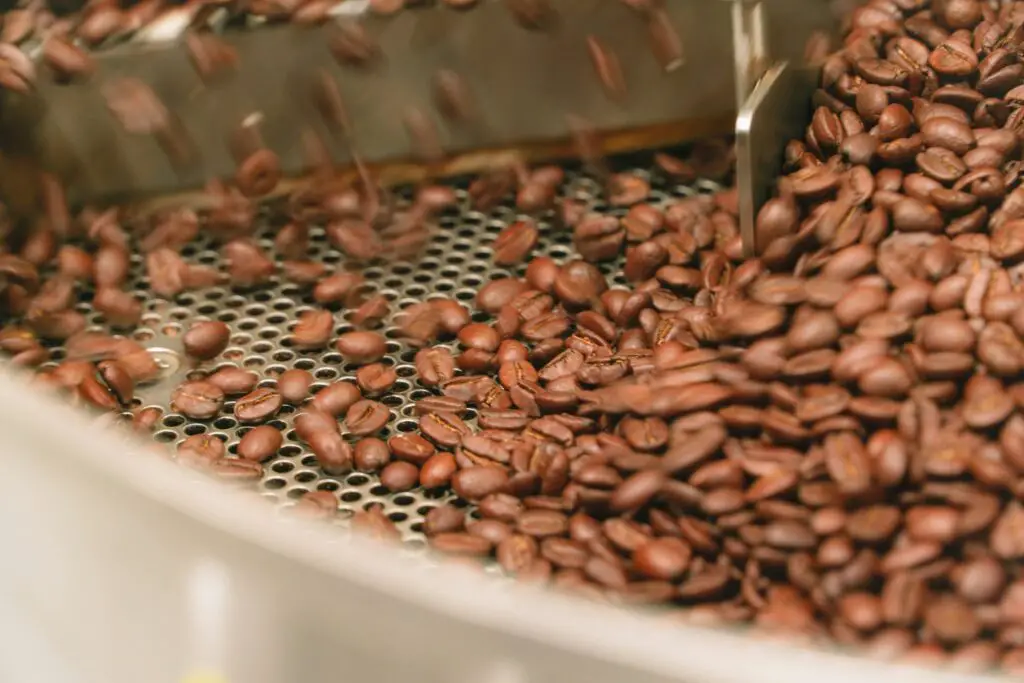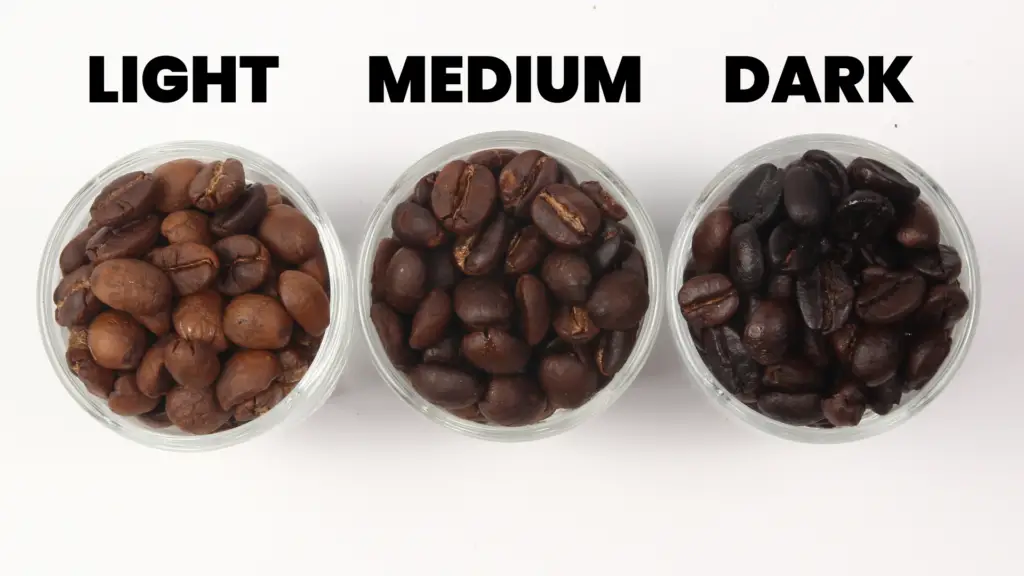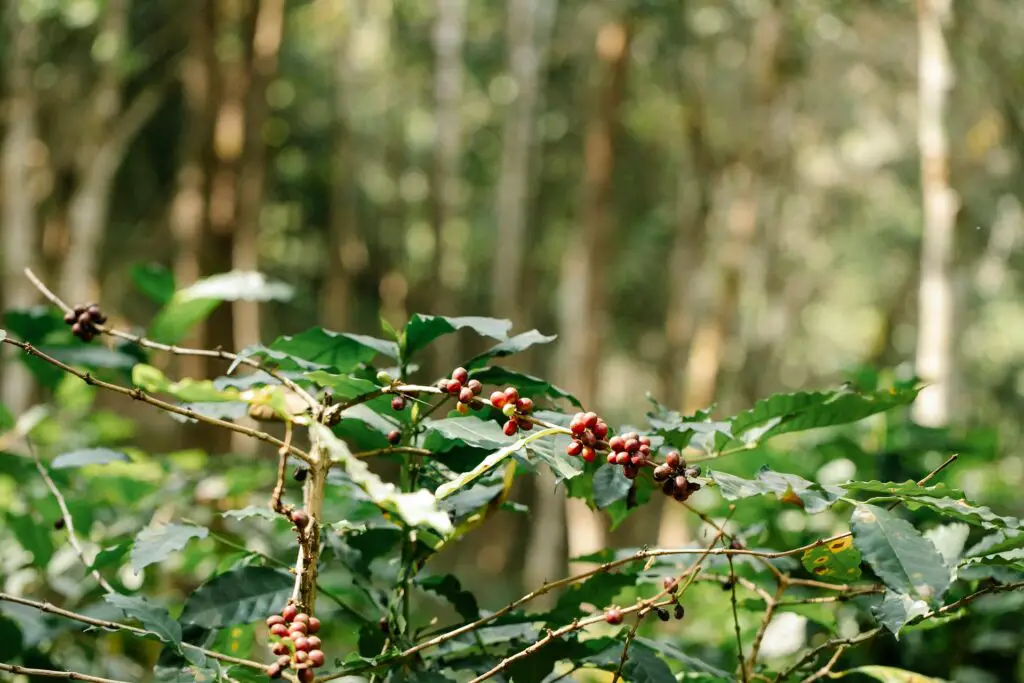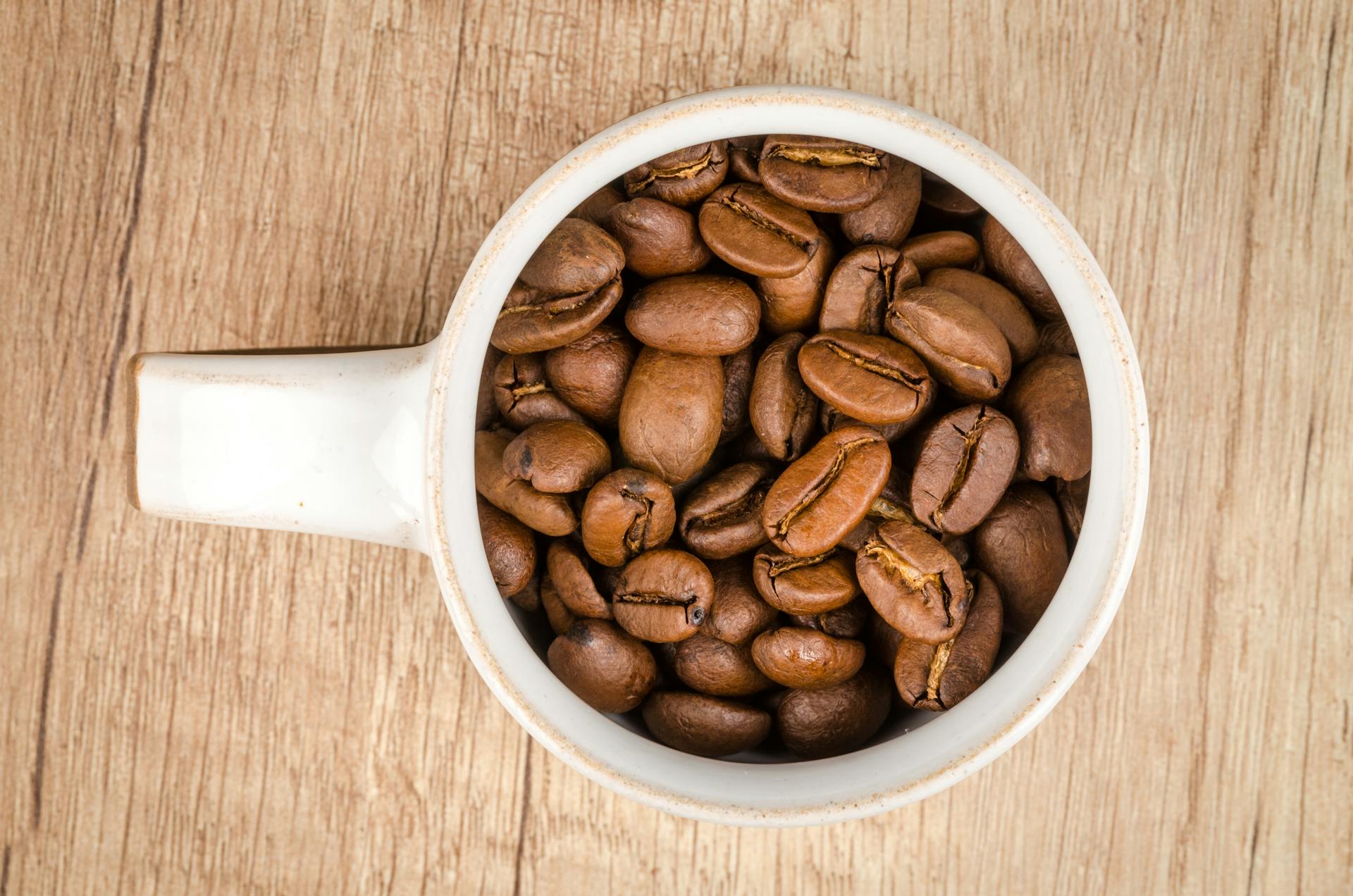Coffee roast levels are a crucial aspect of the coffee experience.
They determine the flavor, aroma, and overall character of your cup.
Understanding these levels can help you find the perfect roast that matches your taste preferences.
In this post, we’ll explore the different roast levels and explain how they influence the final flavor of your coffee.
Whether you’re a light roast lover or prefer a dark, bold brew, knowing the basics of coffee roasting will enhance your appreciation for this beloved beverage.
Let’s dive in!

| Feature | Light Roast | Medium Roast | Dark Roast |
|---|---|---|---|
| Color | Light brown | Medium brown | Dark brown to black |
| Appearance | Dry, no oil | Dry, no oil | Oily surface |
| Flavor Profile | Fruity, floral, cereal, nuts, honey, bread | Caramel, toasted nuts, milk chocolate, fruity | Bold, smoky, bittersweet chocolate, low acidity |
| Common Names | Cinnamon, Scandinavian, Light City, New England | American, City, Breakfast, Regular Roast | French, Italian, Spanish, Espresso |
| Best Brewing Methods | Pour-over, Aeropress | Drip coffee makers, espresso machines | Espresso, French press, moka pot |
| Bean Qualities | Highlights origin and unique bean qualities | Balanced origin and roast flavors | Emphasis on roast flavors over origin |
What is Coffee Roasting?

Coffee roasting is the process of transforming green coffee beans into the aromatic, flavorful beans we use to brew coffee.
The main purpose of roasting is to unlock the beans’ flavors and aromas.
This transformation is crucial because green coffee beans are unpalatable and have none of the characteristics we associate with coffee.
The roasting process involves heating the green beans to high temperatures.
As the beans are heated, they undergo a series of chemical reactions. These reactions change the beans’ color, flavor, and aroma.
The longer the beans are roasted, the more they move away from their natural flavors and develop flavors from the roasting process itself.
We’ll talk about the roasting process in a bit more depth shortly.
The Agtron Color Scale

The Agtron Color Scale is a crucial tool in the coffee industry for measuring and categorizing coffee roast levels.
It uses a numerical system to describe the color of roasted coffee beans, which correlates directly with the degree of roasting.
This scale is important because it provides a consistent and objective way to assess and communicate roast levels.
The scale works by analyzing the color of the roasted coffee beans.
Coffee beans change color as they roast, moving from green to yellow, then to light brown, and finally to various shades of dark brown and black.
The Agtron scale measures these color changes using a specialized device that evaluates the light reflected from the surface of the beans.
The resulting number on the scale indicates the roast level: lower numbers represent darker roasts, and higher numbers represent lighter roasts.
For example, a light roast might have an Agtron score in the range of 70-100, indicating a lighter color and a shorter roasting time.
Medium roasts fall in the mid-range, typically between 50-70, balancing both the bean’s natural flavors and the flavors developed during roasting.
Dark roasts, which have undergone the longest roasting times, score between 25-50, reflecting their deep, dark color and robust flavor profile.
The relevance of the Agtron scale lies in its ability to provide consistency.
Roasters can use the scale to ensure their coffee meets specific standards and to maintain uniformity across different batches.
This consistency is crucial for both quality control and customer satisfaction.
Additionally, for consumers, knowing the Agtron score of a coffee can help them predict the flavor profile and select the roast level that best suits their preferences.
Roast Levels Explained

Light Roast
Light roast coffee is characterized by its light brown color and the absence of oil on the surface of the beans.
This lack of oil results from the shorter roasting time, which stops after the first crack.
Because of this, the beans retain much of their original flavor and characteristics.
The flavor profile of light roast coffee is often described as bright and vibrant.
You can expect fruity and floral notes, along with hints of cereal, nuts, honey, and freshly baked bread.
These delicate flavors and aromas are more pronounced in light roasts because the shorter roasting time preserves the natural qualities of the coffee beans.
Common names for light roast coffee include Cinnamon, Scandinavian, Light City, Half City, and New England.
When it comes to brewing, light roast coffee is best suited for methods that highlight its nuanced flavors.
Pour-over methods, like the V60 or Chemex, are ideal as they allow for precise control over brewing time and temperature.
The Aeropress is also a great option, offering flexibility in brewing that can enhance the coffee’s bright and complex flavors.
Light roasts are particularly valued for their ability to highlight the origin and unique qualities of the coffee beans.
Single origin coffees, which come from a specific region or even a single farm, often shine brightest when lightly roasted.
This roast level allows coffee enthusiasts to appreciate the subtle nuances that reflect the coffee’s terroir.
Medium Roast
Medium roast coffee is known for its medium brown color and lack of oil on the surface of the beans.
This roast level strikes a balance between the lighter and darker ends of the roasting spectrum, resulting in a well-rounded and versatile coffee.
The flavor profile of medium roast coffee is rich and satisfying.
It often features notes of caramel, toasted nuts, and milk chocolate, along with a richness of fruity flavors.
This balance of flavors makes medium roast coffee popular among a wide range of coffee drinkers, as it offers a harmonious blend of the beans’ natural qualities and the flavors developed during roasting.
Common names for medium roast coffee include American, City, Breakfast, and Regular Roast.
In general, medium-roast coffee is highly adaptable.
It works well with drip coffee makers, which are common in many households, and provide a consistent and reliable brewing method.
Espresso machines also complement medium roast coffee, as the balanced flavor profile can stand up to the high-pressure extraction process, resulting in a rich and flavorful espresso shot.
Medium roast coffee provides a perfect balance between the origin flavors of the beans and the characteristics developed through roasting.
This makes it an excellent choice for those who appreciate the unique qualities of the coffee’s origin but also enjoy the deeper, sweeter notes that come from a longer roasting time.
Medium-Dark Roast
Medium-dark roast coffee features a darker brown color with a slight sheen of oil on the surface of the beans.
This indicates a longer roasting time compared to lighter roasts, leading to a more pronounced and robust flavor profile.
The flavor profile of medium-dark roast coffee is bold and rich, often described as bittersweet with mild acidity.
The roasting process brings out deeper caramelization, resulting in complex flavors that include hints of chocolate, roasted nuts, and a slight smokiness.
This roast level provides a perfect balance for those who enjoy a strong coffee without the intense bitterness of a dark roast.
Medium-dark roast coffee is well-suited for a variety of brewing methods.
It performs exceptionally well with espresso machines, delivering a rich and creamy shot with a pronounced flavor.
The French press is another excellent choice, allowing the coffee’s boldness and body to shine through.
Additionally, medium-dark roasts make great cold brew coffee, as the brewing process highlights the roast’s smooth and rich characteristics without excessive bitterness.
This roast level represents a transition between medium and dark roasts, combining the best of both worlds.
It retains some of the origin flavors of the beans while introducing deeper, more developed roast characteristics.
This makes medium-dark roast coffee a versatile and satisfying choice for those who appreciate a robust and well-rounded cup.
Dark Roast
Dark roast coffee is characterized by its dark brown to almost black color, with a noticeable oily surface on the beans.
This deep roasting process enhances certain flavors while diminishing others, creating a unique and robust taste.
The flavor profile of dark roast coffee is bold and intense.
It often features smoky notes, with hints of bittersweet chocolate and a very low level of acidity.
The roasting process caramelizes the sugars in the beans, leading to rich and deep flavors that are less about the bean’s origin and more about the roast itself.
Common names for dark roast coffee include French, Italian, Spanish, and Espresso.
These names often reflect traditional roasting practices in various regions, each offering a slightly different take on the dark roasting style.
Now, let’s briefly talk about brewing.
Dark roast coffee is versatile and pairs well with several methods.
Espresso machines are an excellent choice, as the pressure extraction process brings out the intense flavors and creamy texture typical of dark roasts.
The French press method also works well, allowing the coffee’s boldness and body to be fully appreciated.
Additionally, the moka pot is a popular option, producing a strong, concentrated brew that highlights the roast’s characteristics.
Dark roast coffee places less emphasis on the bean’s origin and more on the flavors developed during roasting.
The intense heat of the roasting process tends to overshadow the subtle nuances of the bean’s original flavor profile.
Instead, the focus is on the rich, robust, and often smoky characteristics that come from the extended roasting time.
First Crack and Second Crack
During the coffee roasting process, two distinct stages known as the “first crack” and “second crack” are crucial in determining the roast level and flavor profile of the beans.
These stages are marked by audible cracks, similar to the sound of popcorn popping.

First Crack
The first crack occurs when the internal temperature of the beans reaches approximately 385°F (196°C).
This stage signifies the beginning of light roasts.
The sound is caused by the expansion of the beans as water inside them turns to steam and escapes.
This expansion causes the beans to crack open.
The first crack is significant because it marks the point at which the beans have officially started roasting and are transitioning from green to roasted coffee.
Light roasts, such as Cinnamon and Scandinavian roasts, are typically stopped shortly after the first crack to preserve the beans’ natural flavors and acidity.
These roasts will have a lighter color, no oil on the surface, and a more pronounced acidic and fruity flavor profile.
Second Crack
The second crack occurs at a higher temperature, around 435°F (224°C).
This stage indicates the transition from medium to dark roasts.
The sound of the second crack is softer and more subtle compared to the first crack, resembling the crackle of burning wood.
This stage is crucial for developing the deeper, bolder flavors found in darker roasts.
The second crack is caused by the internal structure of the beans breaking down further as oils move to the surface.
Dark roasts, such as French and Italian roasts, are often roasted through the second crack.
These beans will have a darker color, an oily surface, and a flavor profile that includes smoky, bittersweet, and chocolatey notes.
The significance of these stages lies in the control they provide to roasters.
By carefully monitoring and responding to the first and second cracks, roasters can achieve the desired roast level, balancing the natural flavors of the beans with the characteristics imparted by the roasting process.
Factors Influencing Coffee Flavor

Country of Origin and Bean Type
The country of origin plays a significant role in the flavor profile of coffee.
Coffee beans are grown in various regions around the world, each with its unique climate, soil, and altitude.
These factors contribute to the distinct flavors associated with different origins.
For example, beans from Ethiopia often have fruity and floral notes, while beans from Brazil tend to have a nutty and chocolatey flavor.
Bean type also affects flavor.
There are two main species of coffee beans: Arabica and Robusta.
Arabica beans are known for their smooth, sweet flavor and higher acidity.
They are often associated with higher quality and more complex flavor profiles.
Robusta beans, on the other hand, have a stronger, more bitter taste and higher caffeine content.
They are typically used in espresso blends and instant coffee.
Growing Environment and Processing Methods
The growing environment, including altitude, temperature, and soil composition, significantly impacts coffee flavor.
Higher altitudes generally produce beans with more acidity and complex flavors.
The temperature and soil conditions also influence the nutrients available to the coffee plants, affecting the taste of the beans.
Processing methods further shape the flavor of coffee.
There are three main processing methods: washed, natural, and honey.
Washed processing involves removing the cherry’s pulp and fermenting the beans to remove the mucilage.
This method often results in a cleaner, brighter flavor.
Natural processing involves drying the beans with the cherry intact, which can produce fruitier and more robust flavors.
Honey processing is a hybrid method that leaves some mucilage on the beans during drying, resulting in a balance of sweetness and acidity.
Roasting Time and Temperature
We already covered this earlier, but let’s just simplify it briefly.
Roasting is a crucial step in determining the final flavor of coffee.
The time and temperature at which beans are roasted affect their color, aroma, and taste.
Lighter roasts are typically roasted at lower temperatures for shorter periods, preserving the beans’ natural flavors and acidity.
Medium roasts strike a balance between the beans’ origin flavors and the sweetness developed during roasting.
Dark roasts are roasted at higher temperatures for longer periods, resulting in bolder, more bitter flavors with lower acidity.
Debunking Myths About Coffee Roast Levels
Coffee roast levels are often misunderstood, leading to several myths.
Two common misconceptions involve caffeine content and the relationship between acidity and bitterness.

Caffeine Content in Light vs. Dark Roasts
A prevalent myth is that dark roast coffee contains more caffeine than light roast.
This misconception likely arises because dark roasts have a stronger, bolder flavor, which many people associate with higher caffeine levels.
However, the roasting process slightly reduces caffeine content.
In reality, the difference in caffeine between light and dark roasts is minimal.
The slight loss of caffeine during roasting does not significantly affect the overall content in your cup.
Misconceptions About Acidity and Bitterness
Another common myth is that dark roast coffee is always more acidic than light roast.
In fact, the opposite is true.
Light roast coffees tend to retain more of their natural acidity, which gives them a brighter, more vibrant flavor.
Dark roast coffees, on the other hand, lose much of their acidity during the extended roasting process.
As a result, they have a smoother, less acidic profile.
Bitterness is another aspect often misunderstood.
While dark roast coffee has a more pronounced bitter taste due to the longer roasting time, this bitterness is not necessarily unpleasant.
It’s a flavor characteristic that many people enjoy.
Light roasts, with their higher acidity, may taste more sour to some palates but are generally less bitter.
FAQ’s
Does darker roast mean stronger coffee?
Not necessarily.
Darker roasts have a bolder, more intense flavor due to the longer roasting time, which brings out smoky and bittersweet notes.
However, the strength of coffee is more related to the amount of coffee used and the brewing method rather than the roast level.
Darker roasts often taste stronger because of their robust flavor, but they do not contain more caffeine than lighter roasts.
What does the coffee roast number mean?
Coffee roast numbers are part of the Agtron scale, which measures the color of roasted coffee beans to determine their roast level.
A lower number indicates a darker roast, while a higher number signifies a lighter roast.
This scale helps roasters maintain consistency and control over the roasting process.
How does roast level affect coffee?
Roast level significantly impacts the flavor, aroma, and acidity of coffee.
Light roasts tend to have bright, fruity, and floral flavors with higher acidity, highlighting the bean’s origin.
Medium roasts offer a balanced flavor profile with notes of caramel, nuts, and chocolate.
Dark roasts have bold, smoky, and bittersweet flavors with low acidity, focusing more on the roast characteristics than the bean’s origin.
What roast of coffee for beginners?
Medium roast coffee is often recommended for beginners.
It provides a balanced flavor profile that is not too intense, making it an excellent introduction to the various tastes and aromas that coffee can offer.
Medium roasts are also versatile and can be brewed using different methods, making them accessible for new coffee drinkers.
What is the best coffee roast for espresso?
Dark roasts are typically preferred for espresso.
Their bold, robust flavors and lower acidity complement the concentrated brewing process of espresso machines.
The intense flavors of dark roasts stand out even in the small, concentrated espresso shot, providing a rich and satisfying coffee experience.


